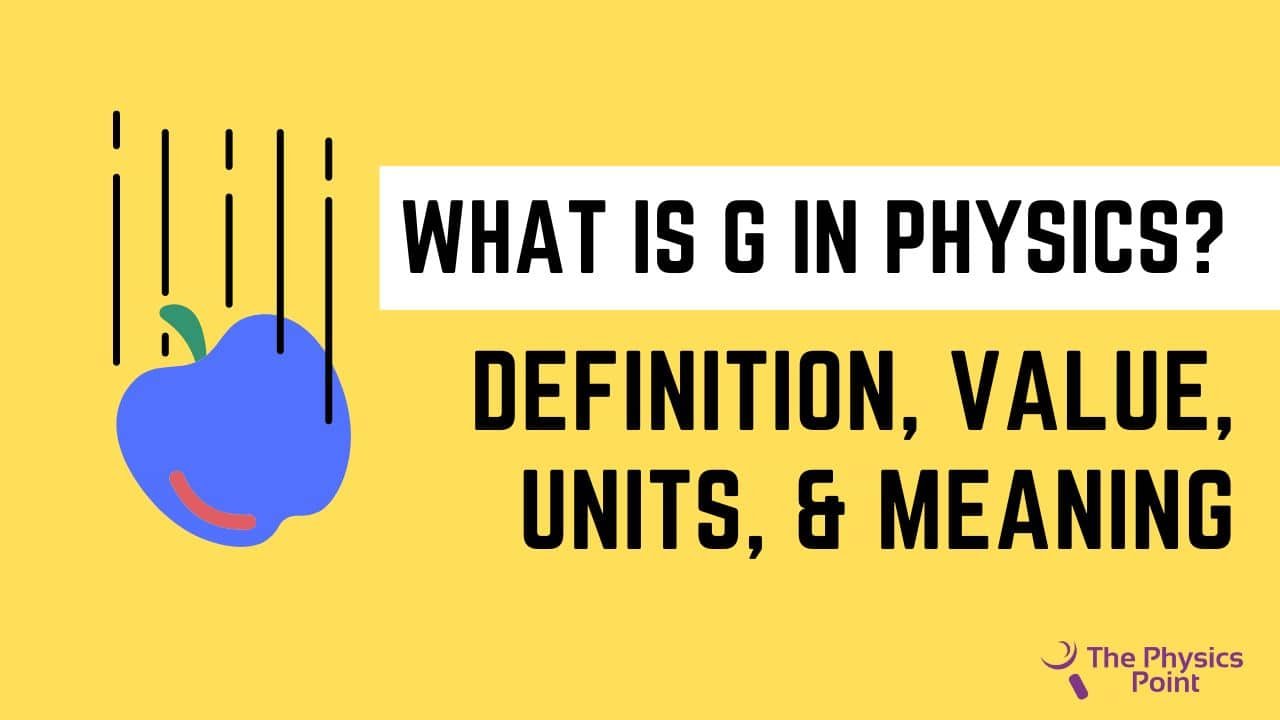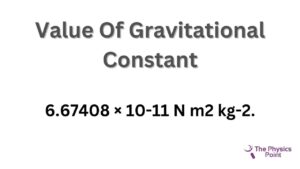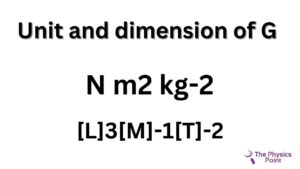What is G in Physics? Definition, Value, Units, Meaning

Hello, guys, you are again welcome to the new article on Physics, What is G in Physics? then this article people tell you about many things related to the gravitational constant. The discovery of gravity is the most important discovery in science. many concepts of gravity are implemented in our daily life such as the lift we used in the moles and at home and etc. Many scientists give their great contributions to the discovery of gravity and gravitational theories. So please read this article from start to end to understand every concept of gravity and the gravitational constant in a fine way.
Some important questions like What are G in Physics, g physics value, g value in physics, the value of g in physics, what is g, etc will be discussed in today’s article (What is G in Physics). These questions are very important for your exams. Please learn these questions very well. We are requesting you read this article carefully without skipping it. So that no concept will remain from your thinking power. Let’s start our article, What is G in Physics now without wasting time.
What is G in Physics (Definition)?
In Physics G represents the gravitational constant. the Gravitational constant is a proportionality constant value and this is used in the gravitational law given by Newton which is called Newton’s law of gravitation. if we talk about the definition of the gravitational constant, it is given like this, This is the force of attraction between the two masses of unit value, and these masses are separated by a unit distance is known as the universal gravitational constant. and it is represented by the G. this gravitational constant is also called Newton’s constant.
History of Gravitation
The history of gravitational theories is very old and many Greek researchers were doing research at that time. But the model concepts of the gravitational theory comes up in the 17th Century through the efforts of Sir Isaac Newton.
According to Newton’s law of universal gravitation is was told that every object that exists in the universe generates an attractive force toward the Other objects in the universe. and this force is directly proportional to the product of the masses and inversely proportional to the square value of the Separation between the objects. And after this wonderful Discovery, Sir Isaac Newton explain many phenomena of the universe such as the motion of the celestial bodies, etc.
In the mid-19th century, there was a great French mathematician Pierre-Simon Laplace, Newton’s theories and development to create the formulas of gravitation effects of the planetary or celestial bodies. After the mathematical approach scientist are able to find many celestial bodies and different types of planets.
And in the start of the 20th century, the great scientist Albert Einstein gives the theory of general relativity. according to Albert Einstein’s theory of relativity, gravity is not considered a force between two or more objects but it is rather the curvature of space-time created by the presence of energy and mass. The Theory of relativity by Albert Einstein is considered the most accurate and relevant theory with respect to gravity. In the above we have given you complete information about What is G in Physics.
Value of the Gravitational Constant
In the above we have given you complete information about What is G in Physics. The value of the gravitational constant in Physics was very first given by Newton. and this value is equal to the 6.67408 × 10-11 N m2 kg-2. This value of the gravitational constant remains constant everywhere in the universe. if you measure the value of capital G for the moon and you measure the value of capital G on earth then the value of both measurements is always equal.
At any point in the universe, The value of G
G = 6.67408 × 10-11 N m2 kg-2

Units
The unit of the gravitational constant G is Nm2kg-2. We represent this unit in the dimensional formula as [L]3[M]-1[T]-2. The gravitational constant is also known as the empirical physical constant and it is involved in the measurement and calculations of gravitational effects according to Newton’s law of universal constant. In the above we have given you complete information about What is G in Physics.

Relation Between G and g
Before knowing the difference between “G” and “g”, let us know the gravitational constant G and acceleration due to gravity g. The acceleration that an object experiences as a result of the gravitational force acting upon it is known as acceleration due to gravity. On the other hand, the gravitational force between two bodies is known as the universal gravitational constant.
The universal gravitational constant (G) and the acceleration owing to gravity (g) do not directly correlate in physics. The acceleration due to gravity experienced at a particular location has no bearing on the value of G, which is constant across the universe. G and g, the two quantities, are unrelated to one another.
The relation between G and g
Where,
- G is the gravitational constant.
- g is the acceleration due to gravity.
The Value of Gravity
In the above, we have given you complete information about What is G in Physics. Now we will tell you about The Value of Gravity. Because the objects have varying masses and radii, their respective masses and velocities cause variations in their respective gravities. Let’s examine the planets’ respective gravities:
| Planets | Radius (m) | Mass (kg) | Value of g (m/s2) |
|---|---|---|---|
| Neptune | 2.27 × 107 | 1.03 × 1026 | 13.3 |
| Uranus | 2.35 × 107 | 8.68 × 1025 | 10.5 |
| Mars | 3.38 × 106 | 6.42 × 1023 | 3.75 |
| Saturn | 5.82 × 107 | 5.68 × 1026 | 11.2 |
| Pluto | 1.15 × 106 | 1.2 × 1022 | 0.61 |
| Mercury | 2.43 × 106 | 3.2 × 1023 | 3.61 |
| Venus | 6.073 × 106 | 4.88 × 1024 | 8.83 |
| Jupiter | 6.98 × 107 | 1.901 × 1027 | 26.0 |
| Earth | 6.4 × 106 | 6 × 1024 | 9.8 |
Some frequently asked questions
Ques. What is G in Physics?
Ans. This is the force of attraction between the two masses of unit value, and these masses are separated by a unit distance known as the universal gravitational constant. and it is represented by the G. this gravitational constant is also called Newton’s constant.
Ques. What is the accurate value of the gravitational constant G?
Ans. the value of the gravitational constant is 6.67408 × 10-11 N m2 kg-2. This is the constant value and in every place, this remains constant and does not change like the value of gravity.
Ques. What is the definition of Newton’s universal law of gravitation?
Ans. According to Newton’s law of universal gravitation heated that every object exists in the universe generates an attractive force toward the Other objects in the universe. and this force is directly proportional to the product of the masses and inversely proportional to the square value of the Separation between the objects.
Conclusion
So guys in today’s article What is G in Physics, they have learned many things about the gravitational constant and its history also. we have described some important topics such as the g value in physics, the value of g in physics, what is g, g in physics, the difference between small g and capital g, g meaning in physics, the value of g class 9, etc. but still, if you have any doubts and suggestions related to What is G in Physics, you can send us through the comment section box. We will surely try to give you a reply as soon as possible from our end. we will meet again with a new physics article very soon.
